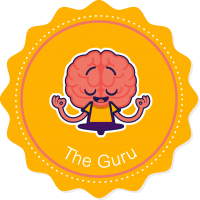Project-Based Learning: Real-World Applications in the Classroom
Project-Based Learning (PBL) is an instructional methodology that encourages students to learn and apply knowledge and skills through engaging projects set around real-world challenges and problems. Unlike traditional learning models that focus on direct instruction of content in isolation, PBL integrates learning with practical application, fostering deeper understanding and retention.
Benefits of Project-Based Learning
1. Enhanced Engagement and Motivation: PBL captivates students by involving them in meaningful, real-life issues that interest them. This relevance boosts their motivation to learn and succeed.
2. Development of Critical Skills: PBL helps students develop essential 21st-century skills such as critical thinking, problem-solving, collaboration, and communication. These skills are crucial for their future careers and personal lives.
3. Deeper Learning: By working on projects over extended periods, students delve deeper into subjects, gaining a more profound understanding than traditional rote learning can provide.
4. Interdisciplinary Learning: Projects often require knowledge from various subjects, promoting interdisciplinary learning. For instance, a project on building a sustainable garden can incorporate science, mathematics, and environmental studies.
Implementing PBL in the Classroom
1. Identify Real-World Problems: Begin by selecting problems or questions that are relevant and challenging. These should be complex enough to require critical thinking and creativity but achievable within the time frame and resources available.
2. Plan and Design the Project: Outline clear objectives and outcomes. Plan the steps and processes students will follow, ensuring they have access to necessary resources and support.
3. Facilitate and Guide: The teacher’s role shifts from lecturer to facilitator. Guide students as they research, brainstorm, and develop solutions. Provide feedback and help them stay on track without dictating their every move.
4. Collaboration and Reflection: Encourage students to work in teams, promoting collaboration and collective problem-solving. Include regular reflection sessions where students can discuss their progress, challenges, and learning experiences.
5. Assessment: Evaluate both the process and the final product. Use rubrics that assess various aspects, such as understanding of content, application of skills, creativity, and teamwork.
Examples of PBL Activities
– Environmental Science Project: Students design a sustainable ecosystem in a school garden, applying principles from biology, chemistry, and environmental science.
– History and Social Studies Project: Students create a multimedia presentation on the impact of a significant historical event, incorporating research from primary and secondary sources.
– Math and Engineering Project: Students build scale models of bridges, applying concepts from physics and geometry, and then test their designs for strength and stability.
Conclusion
Project-Based Learning transforms classrooms into dynamic environments where students actively engage with content, collaborate with peers, and develop skills that extend beyond the classroom. By connecting academic concepts to real-world applications, PBL not only makes learning more enjoyable but also prepares students for future challenges and opportunities.


